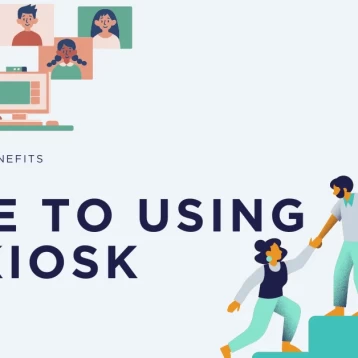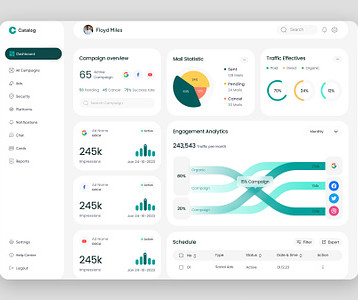As a business owner, you want flexible financing options to meet your company’s needs. Business loans without collateral offer an alternative to traditional secured loans. However, qualifying for secured versus unsecured business loans in Norway comes with different criteria.

This guide will help you understand the requirements to obtain business loans without collateral. We will explain the evaluation process lenders use to assess applications, common factors that influence approval odds, and tips for strengthening your case.
Whether you are aiming for a financing with collateral or without, following the steps outlined here will help you determine the business loan option that works best for your company’s financial goals and qualify for the terms you need.
Understanding the Difference Between Secured and Unsecured Loans
Secured loans require the borrower to provide an asset as collateral that the lender can seize if payments are missed. This provides security for the lender and allows secured loans to offer lower interest rates and longer repayment periods compared to unsecured loans.
Without collateral protection, unsecured loans are a higher risk for lenders. As a result, unsecured loans carry higher interest rates and shorter terms to compensate for that increased risk if the loan is defaulted on.
Eligibility Requirements for Secured Business Loans with Collateral
To take advantage of the lower rates and longer repayment terms that secured loans provide, borrowers must meet the lender’s eligibility requirements. Lenders will evaluate the borrower’s financial position and history to assess risk.
Specifically, borrowers will need to demonstrate they have been in business for a few years with a steady revenue stream and positive cash flow as shown on financial statements and tax returns.
Lenders also require borrowers to provide acceptable collateral, such as real estate, equipment, or inventory, worth at least the credit amount. This helps mitigate the risk to the lender.
Finally, the borrower’s credit history will be reviewed to ensure there are no missed or overdue payments on taxes or other debts in the past. Meeting these criteria helps qualify borrowers for the more favorable terms of a secured loan.
Qualifying for an Unsecured Business Loan without Collateral

Unlike secured loans, unsecured loans do not require collateral from the borrower. However, lenders still evaluate risk factors to determine eligibility.
Borrowers will typically need to show over one year of operations with net profits and sufficient working capital. For an extensive guide through your business loan options, go to billigsteforbrukslån.com/bedriftslån-uten-sikkerhet/—be it a secured or unsecured loan option. Strong personal credit scores in the mid-range or higher help applications, as do clean business credit reports.
Lenders may also review debt-to-income ratios and overall revenues to confirm additional debt service can be managed responsibly. Providing documentation like financial statements and business plans can strengthen an otherwise riskier unsecured loan request.
Key Factors Lenders Consider for Both Types of Loans
When reviewing applications, lenders evaluate several common risk factors regardless of financing type. This includes assessing the borrower’s credit history, cash flow projections, revenues, expenses, and overall financial standing.
For new businesses, the viability of the business concept and future profit potential plays a role. Experience in the industry is also valued. Satisfying minimum underwriting guidelines regarding these sorts of financial metrics and loan-to-value ratios is essential for approval.
Improving Your Chances of Approval for a Secured Loan
Understanding the key factors lenders consider provides insight into how to strengthen a secured loan application. Focusing on factors within the borrower’s control like ensuring stable profits and revenues can help. Maintaining a clean payment history demonstrates responsible financial management.
Choosing high-quality collateral in excellent condition, such as real estate, increases the loan-to-value ratio which lowers risk for the lender. Offering a larger down payment or enlisting a co-signer to share the risk burden may also improve the chances of approval.
Building relationships in the business community establishes trust and rapport with potential lenders. Taking steps to optimize these application components can help receive more favorable secured loan terms.
Tips for Securing an Unsecured Loan Offer
Unsecured loans require creativity to offset the greater risk exposure. Providing current financial statements and projections is essential to demonstrate solid cash flows and debt capacity. Personal guarantees from principal’s signal commitment.
Highlighting any competitive advantages or differentiating your concept helps in validating future profitability assumptions.
Additional documentation like licenses, contracts, or purchase orders supporting your plans can impart confidence. Pursuing a smaller financing size with accelerated payments to graduate to larger facilities is a strategy some borrowers employ.
Comparing Interest Rates and Terms of Secured/Unsecured Options
Generally, secured loan rates tend to be lower than unsecured rates due to less risk for the lender. Secured loans often have longer repayment periods as well. However, unsecured loans may have more flexible qualifications in some cases.
It’s important to consider the total costs of each type of financing, including interest, fees, and monthly payments. Evaluate how these fit your budget and timelines. Remember, secured loans could require collateral assets on your balance sheet.
Frequently Asked Questions About the Application Process
Common questions businesses have included what documents are required in the application, how long the approval process may take, and how credit checks work. Requirements like tax returns and financials are standard. Processing times can vary by lender and application details. Multiple factors beyond just credit scores influence lending decisions.
Consult directly with prospective lenders about their current specific procedures and requirements. Individual outcomes will depend on company details and market factors.
Deciding Which Type of Loan Best Fits Your Business Needs
Various stages of a business’s growth may fit better with certain financing structures over others. Consider your objectives and risk tolerance level, in addition to fund needs and availability of collateral assets.
An option is starting with one type and refinancing to another later as circumstances change. Analyze both short and long-term goals when selecting the best financing structure.
Next Steps After Submitting Your Application
After applying for a business loan, it’s important to understand the next stages of the process. Here are some typical next steps:
- Review—The lender will thoroughly assess your application materials. This includes verifying financial details and performing credit and risk analyses.
- Request for Additional Information—It’s common for lenders to follow up if any clarification or supplemental documentation is needed to complete their review. Be ready to provide requested items promptly.
- Notification of Decision—Once reviewed, you will typically be informed within a targeted period of whether the application was approved, denied, or requires additional consideration.
- Acceptance of Offer—If approved, carefully review all terms and conditions before formally accepting the financing agreement in writing.
- Documentation Process—Final legal and closing papers will outline lending arrangements and disbursement procedures. Make sure all signatures and forms are completed correctly.
- Funding—Upon complete execution of documentation, loan proceeds are dispersed according to the agreed terms, often within a few business days.
- Repayment—Make timely scheduled payments using the lender’s specified payment channels and formats as outlined in financial documents.
Remaining in close contact with your financial officer throughout is advisable. Clear communication supports the smoothest process from funding applications.
Summing Up
This guide has outlined the key differences between secured and unsecured business loans without collateral in Norway. Obtaining either loan type involves navigating eligibility requirements, financial evaluation criteria, and optimizing applications.
Though secured loans provide benefits like lower rates through collateral protection, they may not suit all situations. Unsecured loans offer more flexible qualifications without asset requirements.
The most crucial factors for both are demonstrating a solid financial position and a viable business model to lenders.










